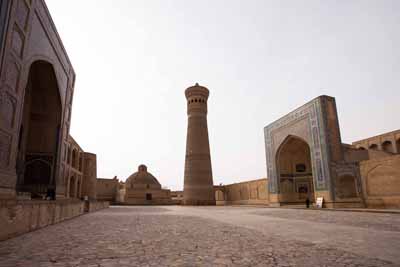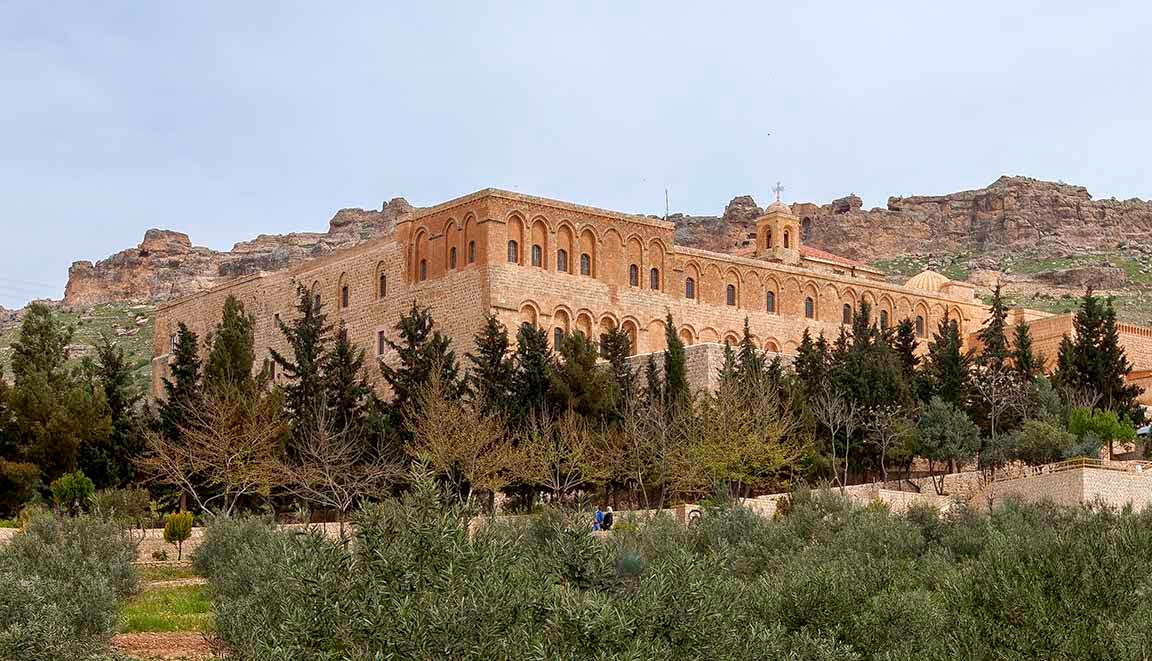Uzbekistan | Bukhara | Kalon Minaret
I already mentioned that only two structures in Bukhara survived the invasion of the city by Chingis Khan in 1220: the Ismael Samani Mausoleum and the Kalon Minaret. The later is located right in the very heart of city, in a large plaza between the Kalon Mosque, the largest mosque in Bukhara, and the Mir-Arab-Madrassah. The current structure is 153 feet high, making it visible, some say, for as far as eight miles from the city. Chingis Khan, approaching from the north, no doubt had the Kalon Minaret in sight as he zeroed in on the city.
A Friday Mosque has stood on the sight of the current Kalon Mosque since at least the tenth century. The first Kalon minaret was built to accompany this mosque in 919, during the time of the Samanids, but it was destroyed by “an act of God”, perhaps an earthquake, in 1068. A wooden minaret was built to replace it by the Arslan Khan of the Qarakhanids, who ruled Bukhara at the time, but this structure later collapsed, reportedly killing many people who were worshipping in the mosque at the time. Another account claims the minaret was destroyed during one of the many sieges of city in the eleventh and early twelfth century.
In 1127 Arslan Khan ordered a new minaret (some sources say it was completed in 1127), one that would withstand any acts of either God or man. A foundation of mortar fortified with camels’ milk, egg yokes, and bulls’ blood was set forty-five feet into the ground and allowed to harden for two years. Then construction began on what would be at the time the largest fresh-standing tower in the world. Arslan Khan was overjoyed by this monument which glorified his city throughout the Islamic geosphere, but the architect, a man named Usto Bako, was dissatisfied by the end result: “The flight of my fancy was greater than the minaret I built,” he lamented. Reportedly he was buried 153 feet from minaret, the same distance as its height.
Chingis Khan was reportedly so impressed by the minaret that he ordered his troops not to destroy it. Even to this day tour guides tell the story that when Chingis first approached the minaret he bent his head backwards to take it all in until the fur hat he was wearing fell off his head. The underlying theme of this story as told by Uzbeks is that Chingis was basically a country bumpkin from the steppes of Mongolia who had never seen the sophisticated monuments of an advanced civilization before and was thus amazed that human beings could have created it. This story may of course be completely apocrophal, but for whatever reason the minaret has survived down to the present day.
The Kalon Minaret, with the Mir-Arab-Madrassah on the left and the Kalon Mosque on the right
The 153-foot high Kalon Mosque
The current minaret stand on an octagonal base and has twelve separate bands of distinctive brickwork. Each band is different and the patterns never repeat themselves.
The gallery at the top has sixteen windows
Another view of Kalon Mosque







